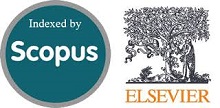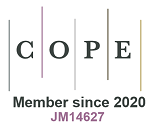Exploring the Utilization of Augmented Reality in Higher Education Perceptions of Media and Communication Students
Downloads
Doi: 10.28991/ESJ-2023-SIED2-016
Full Text: PDF
Downloads
Alkhabra, Y. A., Ibrahem, U. M., & Alkhabra, S. A. (2023). Augmented reality technology in enhancing learning retention and critical thinking according to STEAM program. Humanities and Social Sciences Communications, 10(1), 174. doi:10.1057/s41599-023-01650-w.
Ragheb, M. A., Tantawi, P., Farouk, N., & Hatata, A. (2022). Investigating the acceptance of applying chat-bot (Artificial intelligence) technology among higher education students in Egypt. International Journal of Higher Education Management, 08(02), 1-13. doi:10.24052/ijhem/v08n02/art-1.
Akçayır, M., & Akçayır, G. (2017). Advantages and challenges associated with augmented reality for education: A systematic review of the literature. Educational Research Review, 20, 1–11. doi:10.1016/j.edurev.2016.11.002.
Bacca, J., Baldiris, S., Fabregat, R., Graf, S., & Kinshuk. (2014). Augmented reality trends in education: A systematic review of research and applications. Educational Technology and Society, 17(4), 133–149. https://dugi-doc.udg.edu/handle/10256/17763.
Aldahdouh, T. Z., Holubek, V., Korhonen, V., Abou-dagga, S., & Al-Masri, N. (2023). Preparing university teachers for times of uncertainty: the role of a transnational pedagogical-development training in Palestinian higher education. Journal of Applied Research in Higher Education, 15(4), 1011–1028. doi:10.1108/JARHE-05-2022-0146.
Ghani, A., Griffiths, D., Salha, S., Affouneh, S., Khalili, F., Khlaif, Z. N., & Burgos, D. (2022). Developing Teaching Practice in Computational Thinking in Palestine. Frontiers in Psychology, 13. doi:10.3389/fpsyg.2022.870090.
Božič, V. (2023). The use of digital tools and AI in education. Preprint, 1-14. doi:10.13140/RG.2.2.13438.87363.
Abu Mukh, Y., & Salhab, R. (2021). the Digital Transformation Challenges in Higher Education Institution in Palestine During the Covid-19 Crisis. International Journal of Humanities and Educational Research, 3(4), 95–100. doi:10.47832/2757-5403.4-3.8.
Aburub, I., & Assaf, D. (2022). Digital Transformation of Higher Education in Palestine: Employment, Obstacles, and Trends. Baltic Journal of Law & Politics, 15(3), 551-566. doi:10.2478/bjlp-2022-002041.
Aqel, M. S., & Azzam, S. S. A. (2018). Effectiveness of Employing the Augmented Reality Technology in the Development of the Achievement of Seventh Grade Students in Chemistry in the Gaza Strip. International Journal of Learning, 6(1), 27–42. doi:10.18576/ijlms/060103.
Horoub, I. (2023). Understanding media empowerment: citizen journalism in Palestine. Humanities and Social Sciences Communications, 10(1), 32. doi:10.1057/s41599-023-01526-z.
Bozkurt, A., & Sharma, R. C. (2020). Emergency remote teaching in a time of global crisis due to CoronaVirus pandemic. Asian journal of distance education, 15(1), 1-6.
Rapanta, C., Botturi, L., Goodyear, P., Guí rdia, L., & Koole, M. (2020). Online University Teaching During and After the Covid-19 Crisis: Refocusing Teacher Presence and Learning Activity. Postdigital Science and Education, 2(3), 923–945. doi:10.1007/s42438-020-00155-y.
Shraim, K., & Crompton, H. (2020). The use of technology to continue learning in Palestine disrupted with COVID-19. Asian Journal of Distance Education, 15(2), 1–20. doi:10.5281/zenodo.4292589.
Haleem, A., Javaid, M., Qadri, M. A., & Suman, R. (2022). Understanding the role of digital technologies in education: A review. Sustainable Operations and Computers, 3, 275–285. doi:10.1016/j.susoc.2022.05.004.
BZU (2023). Birzeit University, Birzeit, West Bank, Palestine. Available online: https://www.birzeit.edu/en (accessed May 2023).
Gurevych, R., Silveistr, A., Ðœokliuk, M., Shaposhnikova, I., Gordiichuk, G., & Saiapina, S. (2021). Using Augmented Reality Technology in Higher Education Institutions. Postmodern Openings, 12(2), 109-132. doi:10.18662/po/12.2/299.
Divayana, D. G. H., Ariawan, I. P. W., & Adiarta, A. (2022). Design of New Evaluation Model Based on Discrepancy Daiwi Asuri Sampad. Emerging Science Journal, 6(1), 166-184. doi:10.28991/ESJ-2022-06-01-013.
Holley, D., Hobbs, M., & Menown, C. (2016). The Augmented Library: Motivating STEM Students. Networks, 19, 77–84.
Jumani, A. K., Siddique, W. A., Laghari, A. A., Abro, A., & Khan, A. A. (2022). Virtual Reality and Augmented Reality for Education. Multimedia Computing Systems and Virtual Reality, 189–210. doi:10.1201/9781003196686-9.
Palmarini, R., Erkoyuncu, J. A., Roy, R., & Torabmostaedi, H. (2018). A systematic review of augmented reality applications in maintenance. Robotics and Computer-Integrated Manufacturing, 49, 215–228. doi:10.1016/j.rcim.2017.06.002.
Sáez-López, J. M., Cózar-Gutiérrez, R., González-Calero, J. A., & Carrasco, C. J. G. (2020). Augmented reality in higher education: An evaluation program in initial teacher training. Education Sciences, 10(2), 26. doi:10.3390/educsci10020026.
Suryanto, A., Kusumawati, D. A., & Sanhoury, I. M. H. (2018). Development of Augmented Reality Technology Based Learning Media of Lathe Machines. Jurnal Pendidikan Teknologi Dan Kejuruan, 24(1), 32–38. doi:10.21831/jptk.v24i1.18245.
Toledo-Morales, P., & Sanchez-Garcia, J. M. (2018). Use of augmented reality in social sciences as educational resource. Turkish Online Journal of Distance Education, 19(3), 38–52. doi:10.17718/tojde.444635.
Videnov, K., Stoykova, V., & Kazlacheva, Z. (2018). Application of Augmented Reality in Higher Education. Applied Researches in Technics, Technologies and Education, 6(1), 1–9. doi:10.15547/artte.2018.01.001.
Xiong, J., Hsiang, E. L., He, Z., Zhan, T., & Wu, S. T. (2021). Augmented reality and virtual reality displays: emerging technologies and future perspectives. Light: Science & Applications, 10(1), 216. doi:10.1038/s41377-021-00658-8.
Sommerauer, P., & Müller, O. (2018). Augmented Reality for Teaching and Learning-a literature Review on Theoretical and Empirical Foundations. 26th European Conference on Information Systems: Beyond Digitization - Facets of Socio-Technical Change, ECIS 2018, 23-28 June, 2018, Portsmouth, United Kingdom.
Babkin, V. V., Sharavara, V. V., Sharavara, V. V., Bilous, V. V., Voznyak, A. V., & Kharchenko, S. Ya. (2021). Using augmented reality in university education for future IT specialists: educational process and student research work, CEUR Workshop Proceedings. doi:10.31812/123456789/4632.
Kan Yeung, A. W., Tosevska, A., Klager, E., Eibensteiner, F., Laxar, D., Stoyanov, J., Glisic, M., Zeiner, S., Kulnik, S. T., Crutzen, R., Kimberger, O., Kletecka-Pulker, M., Atanasov, A. G., & Willschke, H. (2021). Virtual and augmented reality applications in medicine: Analysis of the scientific literature. Journal of Medical Internet Research, 23(2), e25499. doi:10.2196/25499.
Farid Kamal Heikal, A. R. (2021). Augmented Reality Technologies. International Journal of Artificial Intelligence and Emerging Technology, 4(1), 17–39. doi:10.21608/ijaiet.2021.187259.
Elfitra, Mansyur, A., & Taufik, M. I. (2021). Student Perceptions of Augmented Reality (AR) Media in Calculus Courses. Journal of Physics: Conference Series, 1819(1), 12033. doi:10.1088/1742-6596/1819/1/012033.
Alrimawi, T., & Haddad, W. (2020). Media Students' Capability to Interact with Augmented Reality and 3D Animations in Virtual Broadcast News Studios. International Journal of Computer Graphics & Animation, 10(3), 1–15. doi:10.5121/ijcga.2020.10301.
Budiman, R. D. A. (2016). Developing Learning Media Based on Augmented Reality (Ar) To Improve Learning Motivation. JETL (Journal Of Education, Teaching and Learning), 1(2), 89. doi:10.26737/jetl.v1i2.45.
Pavlovic, D., & Ljajic, S. (2017). Modern Media Technologies in the Education of Journalism Students. 13th International Conference ELearning and Software for Education. doi:10.12753/2066-026x-17-031.
Cramarenco, R. E., Burcčƒ-Voicu, M. I., & Dabija, D. C. (2023). Student Perceptions of Online Education and Digital Technologies during the COVID-19 Pandemic: A Systematic Review. Electronics (Switzerland), 12(2), 319. doi:10.3390/electronics12020319.
Youssef, M. M., Mousa, S. A., Baloola, M. O., & Fouda, B. M. (2020). The Impact of Mobile Augmented Reality Design Implementation on User Engagement. Advances in Computing and Data Sciences. ICACDS 2020. Communications in Computer and Information Science, Vol. 1244. Springer, Singapore. doi:10.1007/978-981-15-6634-9_10.
Yoon, S., & Chandrasekera, T. (2015). Adopting Augmented Reality in Design Communication: Focusing on Improving Spatial Abilities. The International Journal of Architectonic, Spatial, and Environmental Design, 9(1), 1–14. doi:10.18848/2325-1662/cgp/v09i01/38384.
Dalim, C. S. C., Kolivand, H., Kadhim, H., Sunar, M. S., & Billinghurst, M. (2017). Factors influencing the acceptance of augmented reality in education: A review of the literature. Journal of Computer Science, 13(11), 581–589. doi:10.3844/jcssp.2017.581.589.
Javornik, A. (2016). Augmented reality: Research agenda for studying the impact of its media characteristics on consumer behaviour. Journal of Retailing and Consumer Services, 30, 252–261. doi:10.1016/j.jretconser.2016.02.004.
Shibib, K. (2021). From higher education in historic palestine towards a pan-Palestinian higher education. Contemporary Arab Affairs, 14(3), 21–54. doi:10.1525/caa.2021.14.3.21.
Gredes, T., Pricop-Jeckstadt, M., Mereti, E., & Botzenhart, U. (2022). Survey of student attitudes toward digital technology in practical technical dental education using the AR-Demonstrator-App. Journal of Dental Education, 86(1), 12–20. doi:10.1002/jdd.12783.
Venkatesh, V., & Davis, F. D. (2000). Theoretical extension of the Technology Acceptance Model: Four longitudinal field studies. Management Science, 46(2), 186–204. doi:10.1287/mnsc.46.2.186.11926.
Elshafey, A., Saar, C. C., Aminudin, E. B., Gheisari, M., & Usmani, A. (2020). Technology acceptance model for augmented reality and building information modeling integration in the construction industry. Journal of Information Technology in Construction, 25, 161–172. doi:10.36680/j.itcon.2020.010.
Al-Adwan, A. S., Li, N., Al-Adwan, A., Abbasi, G. A., Albelbis, N. A., & Habibi, A. (2023). "Extending the Technology Acceptance Model (TAM) to Predict University Students' Intentions to Use Metaverse-Based Learning Platforms”. Education and Information Technologies. doi:10.1007/s10639-023-11816-3.
Koçak, Ö., Yilmaz, R. M., Küçük, S., & Göktaş, Y. (2019). The Educational Potential of Augmented Reality Technology: Experiences of Instructional Designers and Practitioners. Journal of Education and Future, 15, 17–36. doi:10.30786/jef.396286.
Liao, S., Hong, J. C., Wen, M. H., & Pan, Y. C. (2018). Applying technology acceptance model (TAM) to explore users' behavioral intention to adopt a performance assessment system for E-book production. EURASIA Journal of Mathematics, Science and Technology Education, 14(10), em1601. doi:10.29333/ejmste/93575.
Oyman, M., Bal, D., & Ozer, S. (2022). Extending the technology acceptance model to explain how perceived augmented reality affects consumers' perceptions. Computers in Human Behavior, 128. doi:10.1016/j.chb.2021.107127.
Ministry of Education and Higher Education. (2022). Education sector strategic plan 2017-2022. Ministry of Education and Higher Education, Ramallah, Palestine. Available online: https://planipolis.iiep.unesco.org/sites/default/files/ressources/ palestine_education_sector_strategic_plan_2017-2022.pdf (accessed on May 2023).
Khlaif, Z. N., & Farid, S. (2018). Transforming learning for the smart learning paradigm: lessons learned from the Palestinian initiative. Smart Learning Environments, 5(1), 12. doi:10.1186/s40561-018-0059-9.
Affouneh, S., Khlaif, Z. N., Burgos, D., & Salha, S. (2021). Virtualization of higher education during covid-19: A successful case study in Palestine. Sustainability (Switzerland), 13(12), 6583. doi:10.3390/su13126583.
Wiersma, W., & Jurs, S. G. (2005). Research methods in education: an introduction. Pearson, London, United Kingdom.
Skaik, H. (2016). Academics' knowledge sharing behaviour in United Arab Emirates. LAP LAMBERT Academic Publishing, Saarbrücken, Germany.
Weathington, B. L., Cunningham, C. J., & Pittenger, D. J. (2010). Research methods for the behavioral and social sciences. John Wiley & Sons, Hoboken, United States.
- This work (including HTML and PDF Files) is licensed under a Creative Commons Attribution 4.0 International License.






